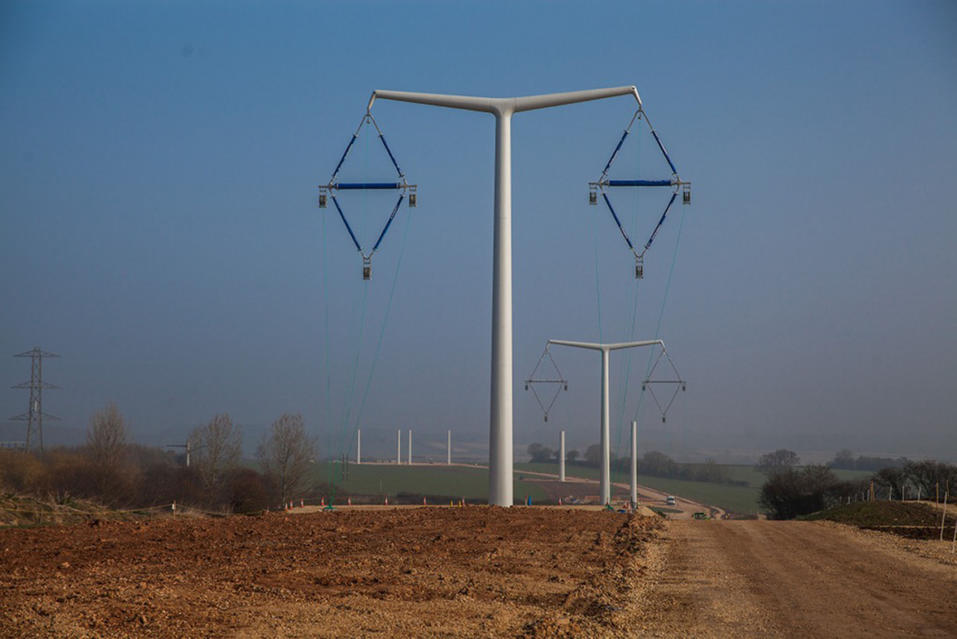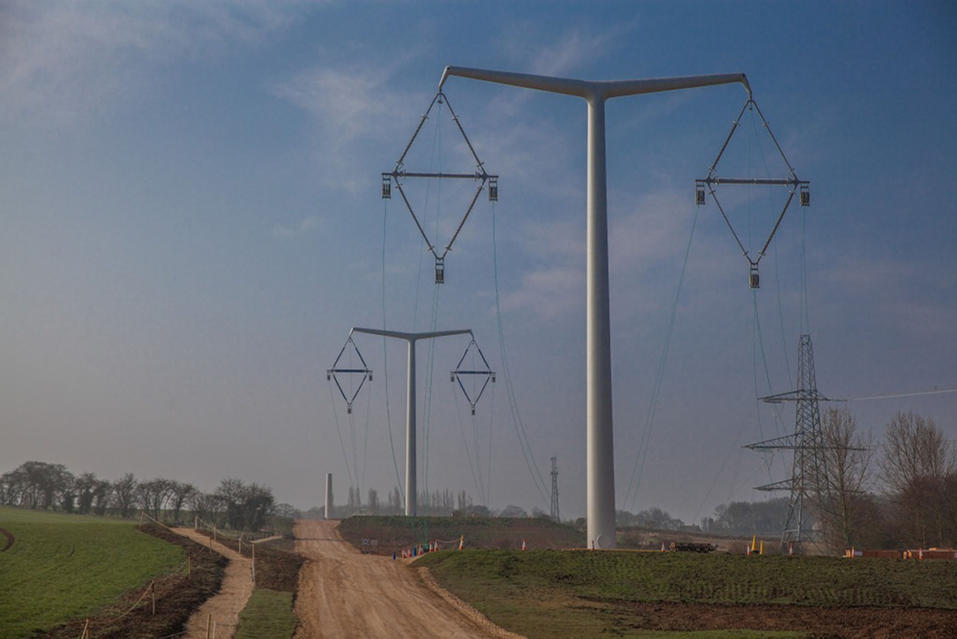New T- pylon designed to make the English countryside prettier

A striking new design of electricity pylon which it is hoped will have less impact on the landscape can be seen in the English countryside for first time.
National Grid has begun construction of a line of the new high voltage T-pylons, which at 35 metres (115 ft) are up to a third lower in height than the traditional steel lattice pylons, at the company's Eakring training academy in Nottinghamshire.
The pylon, designed by Danish architects and engineering company Bystrup, was the winner of an international competition in 2011 to find a 21st century design for carrying high voltage overhead lines. Words: PA.
Its innovative but simple layout gives it a T-shaped cross arm, with the electricity wires and the insulators which hold them in place arranged in a diamond "earring" shape.
The training line of six pylons being constructed will include all five of the family of T-pylons, which each have a different function in the transmission network.
They include a standard suspension pylon to carry the cables in a straight line, pylons which can allow a turn in the route and terminal pylons which end a line at a substation or take the cables underground.
Since the T-pylon won the competition, National Grid has been working with engineers and partners to turn it into a reality and ensure it can cope with the stresses it could face, such as high winds and the extra weight of ice on the cables in extremely cold weather.

David Wright, director of electricity transmission asset management at National Grid, said: "We've been able to answer yes to the hundreds of questions that need to be asked before we can introduce a new type of pylon.
"The training line has enabled us to learn many so many lessons about how to manufacture and build the T-pylon."
And he said: "We developed the new style of pylon so that we could have a 21st century design to offer as we plan new transmission routes.
"The T-pylon is not a replacement for the steel lattice pylon but it's a new option and in some landscapes its shorter height and sleeker appearance can offer real advantages."
Related articles
The most beautiful county in England is...
Prince Charles: "We are losing the British countryside"
Video: An English poppy field in summer





